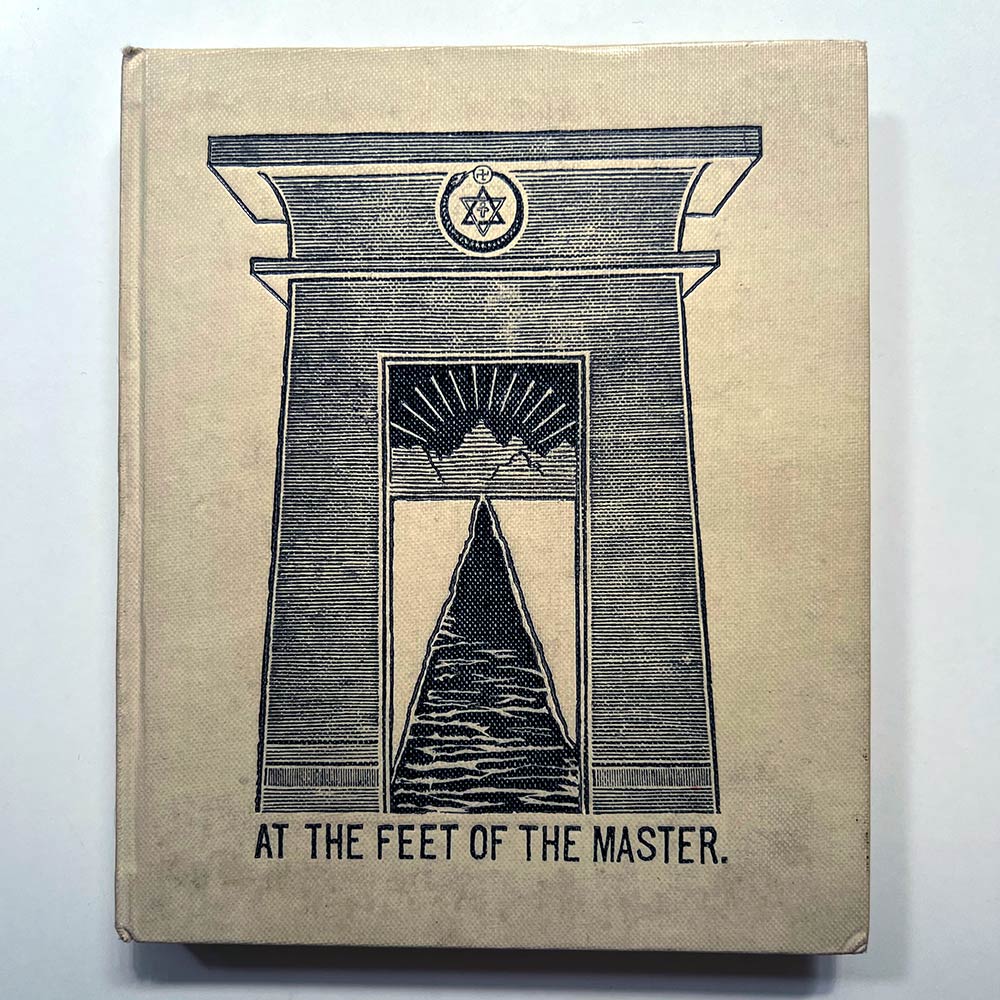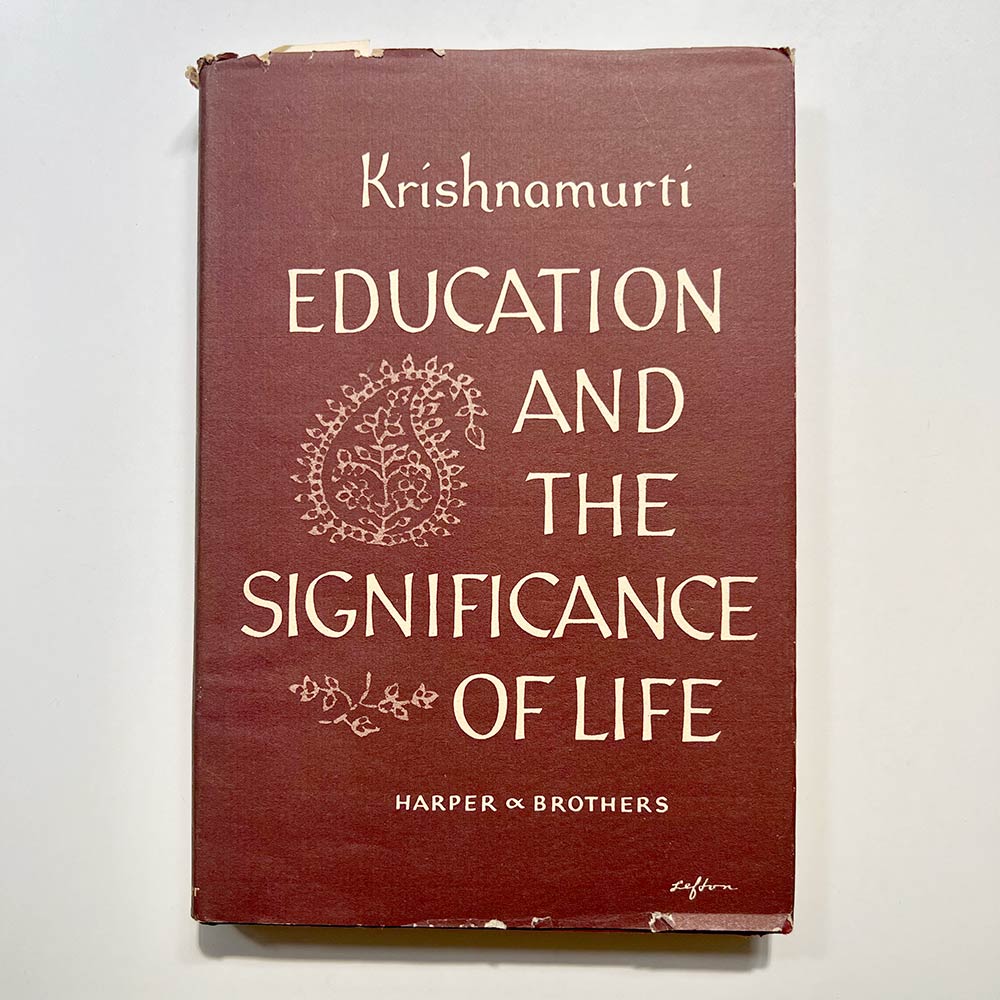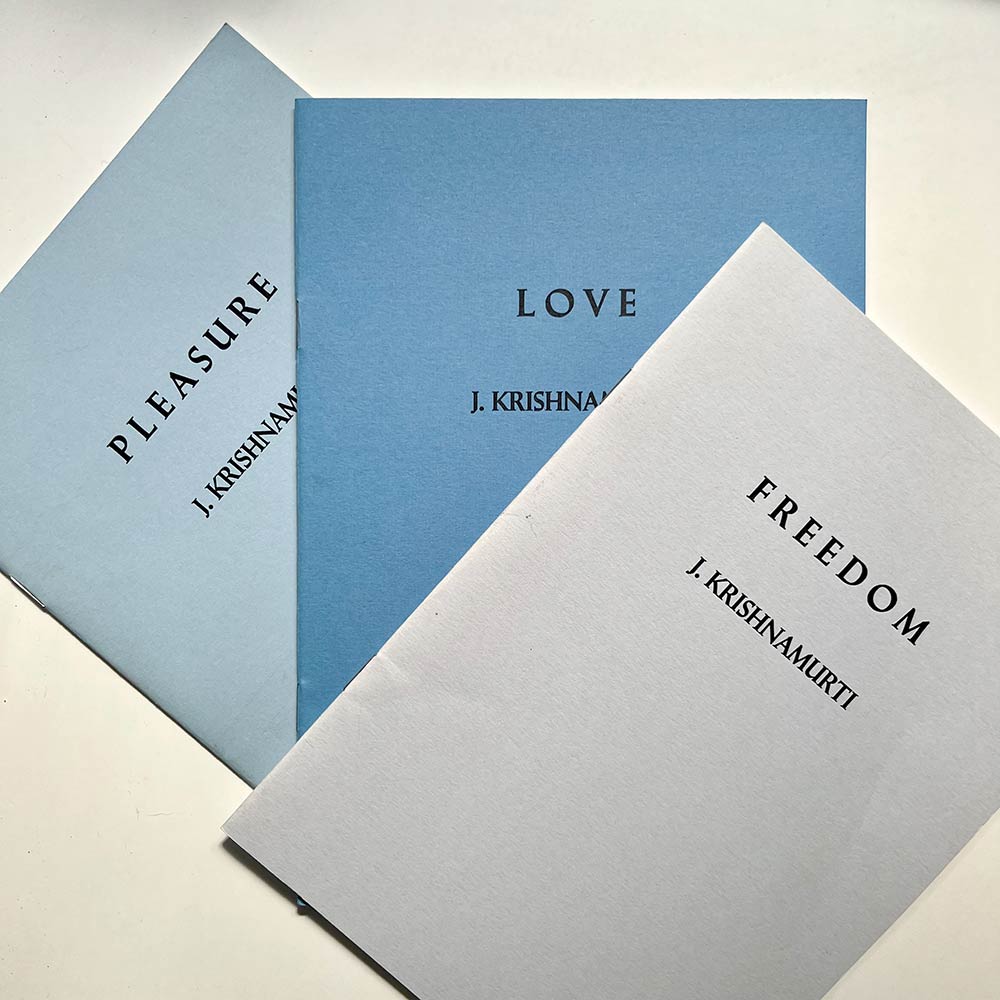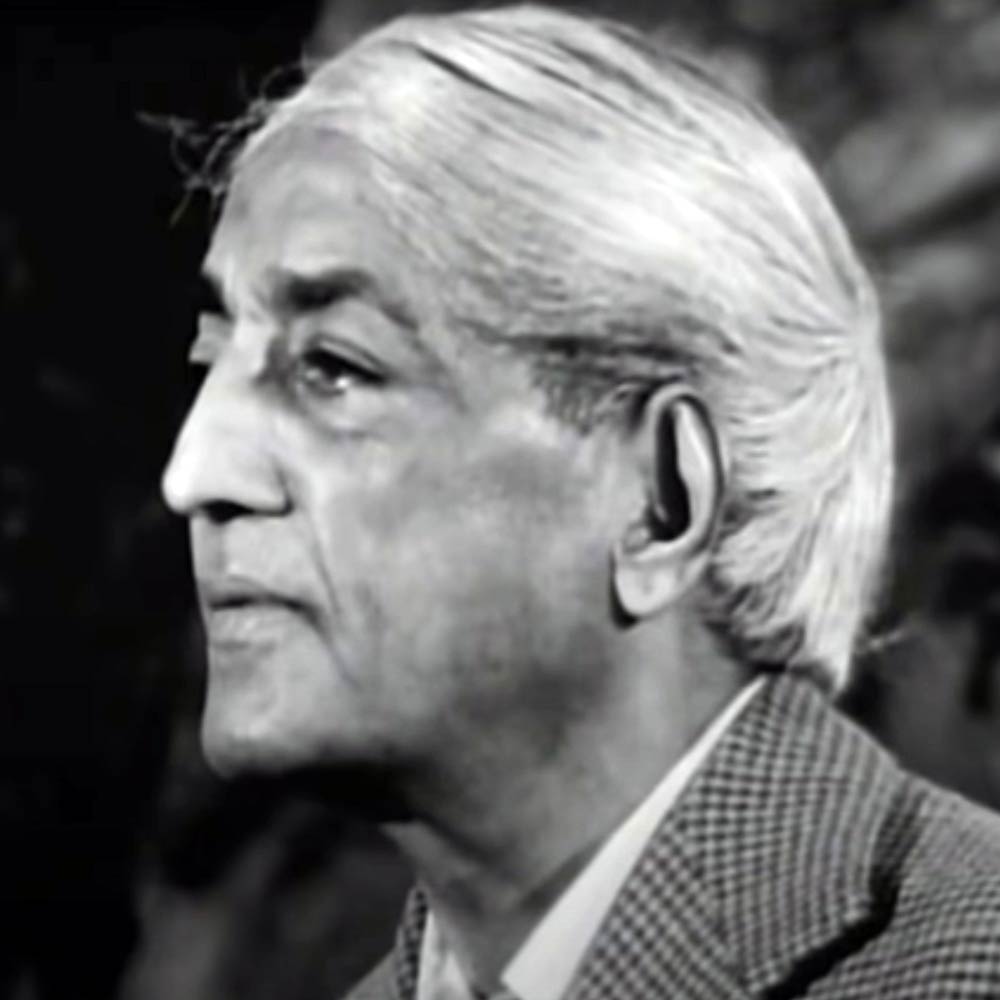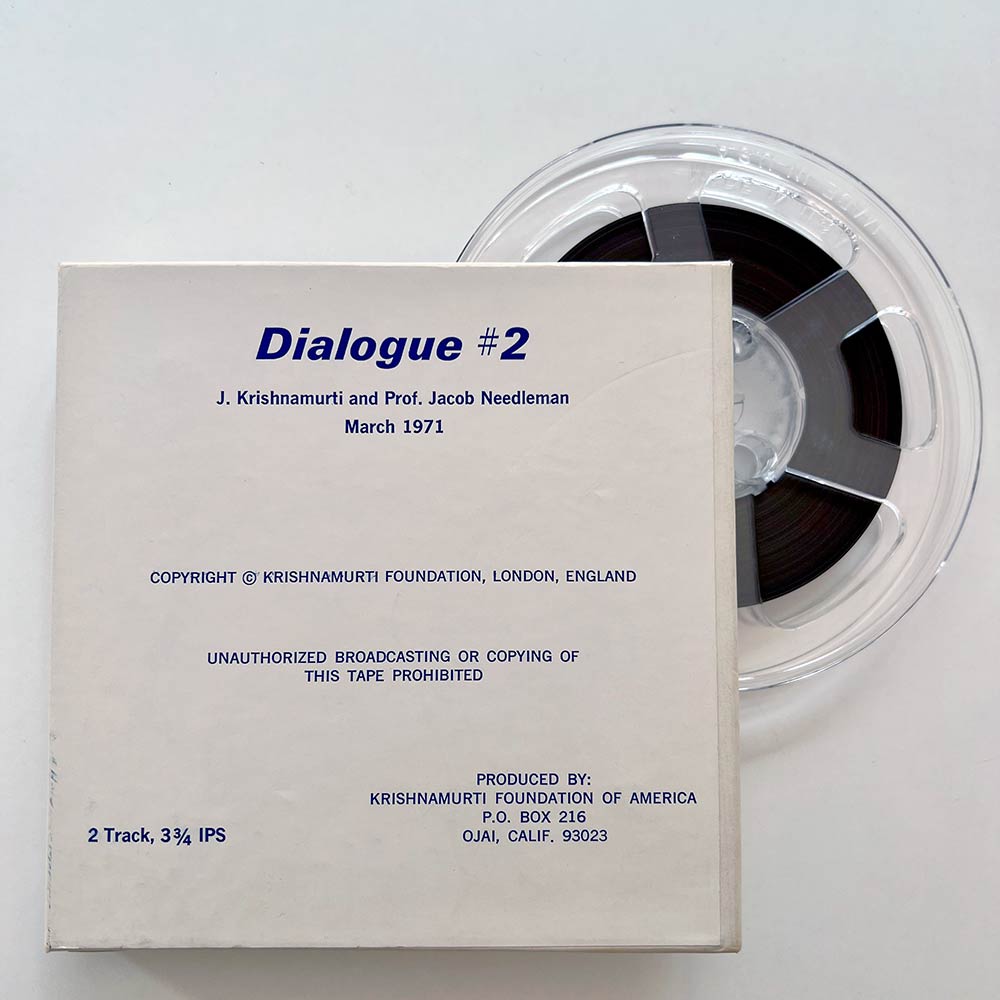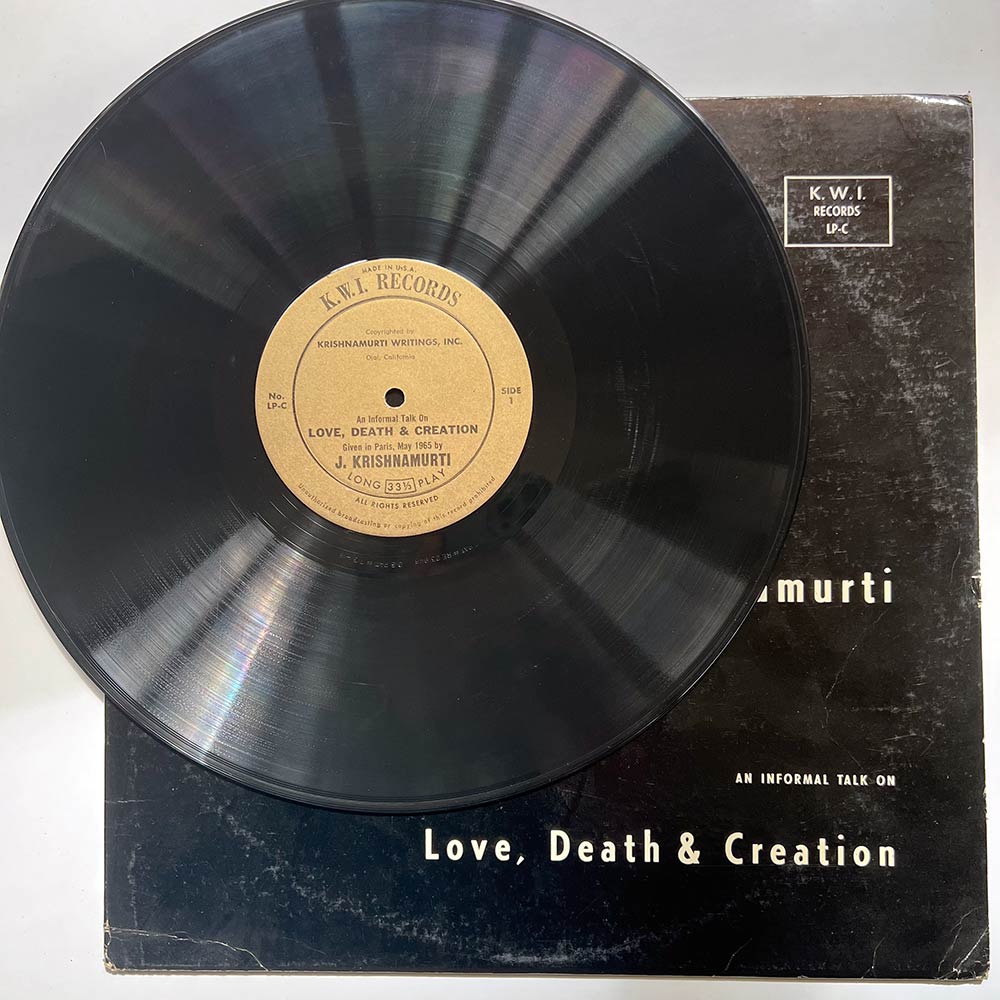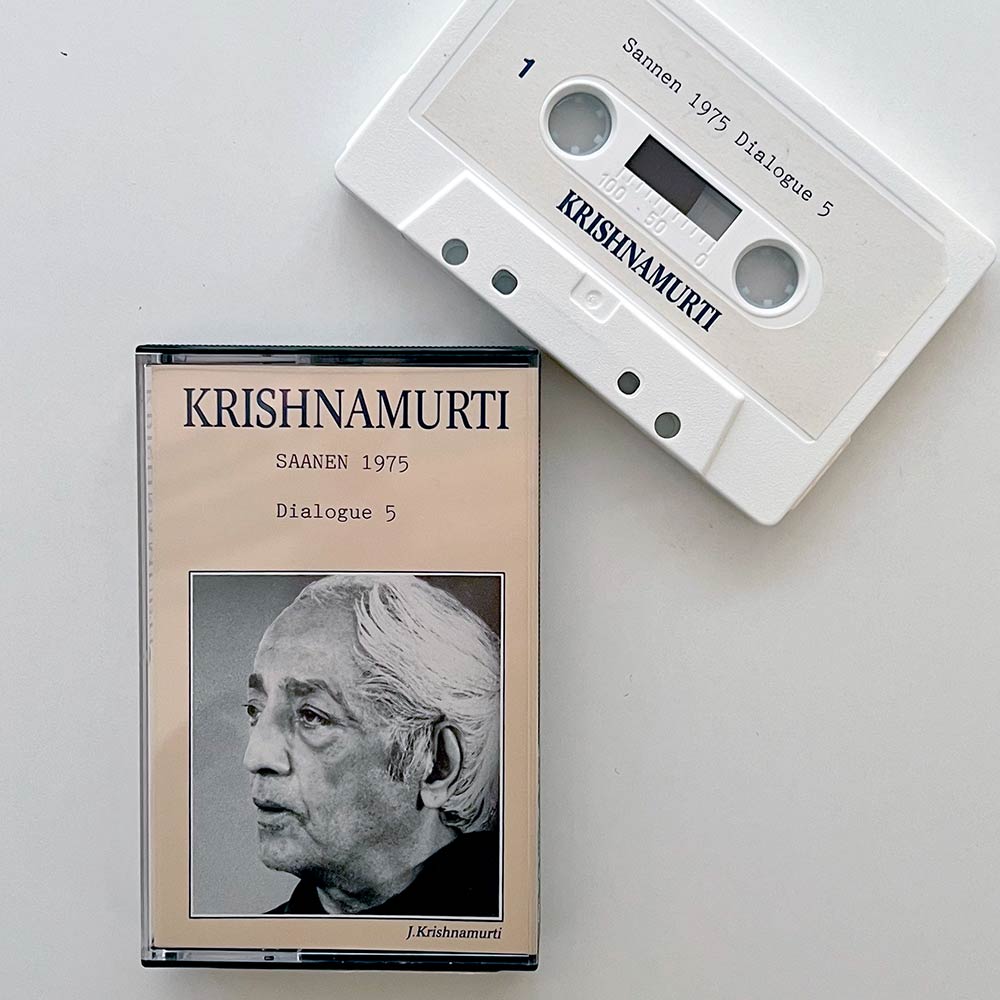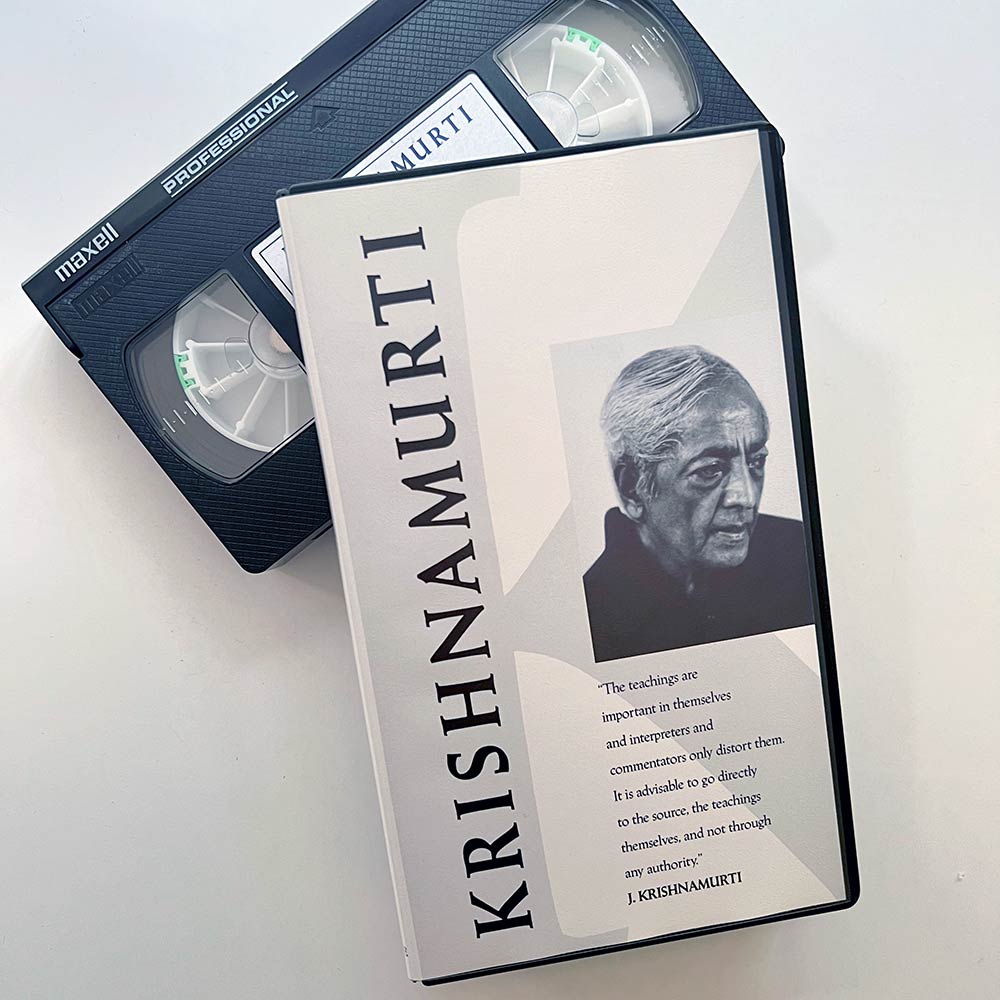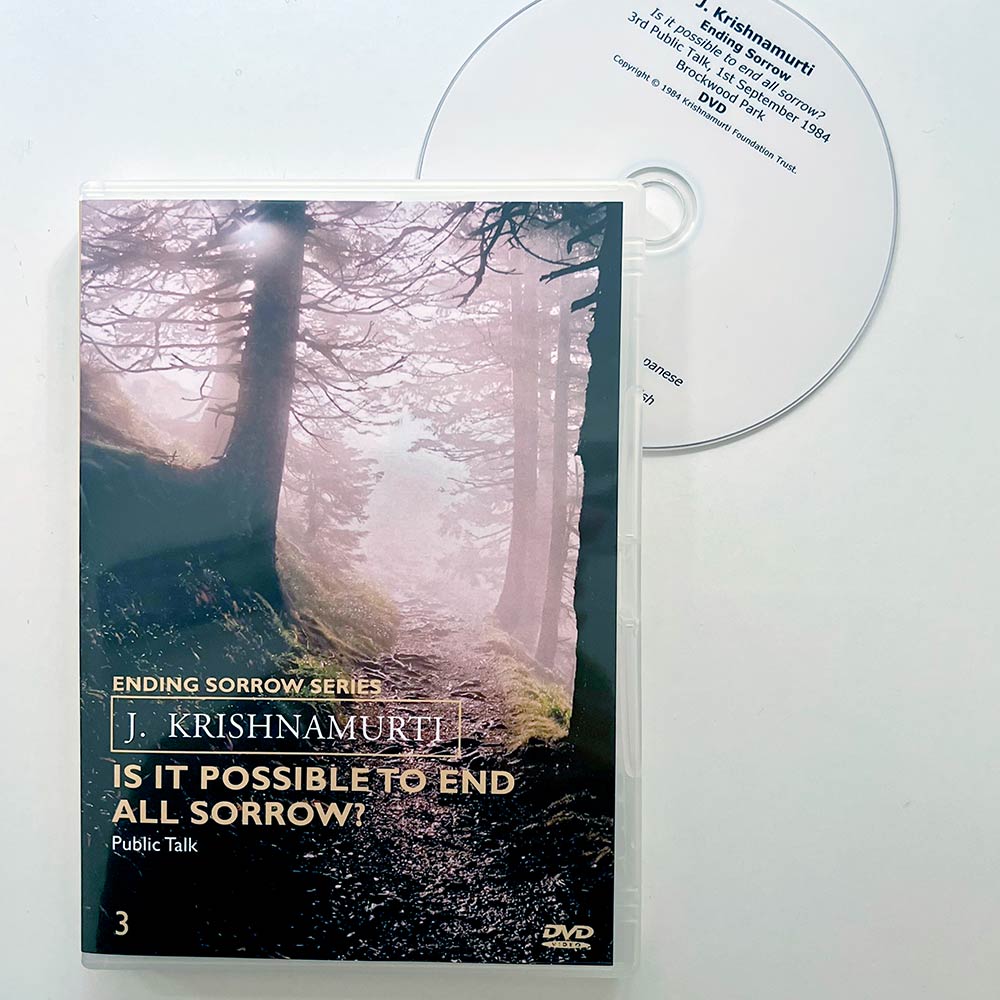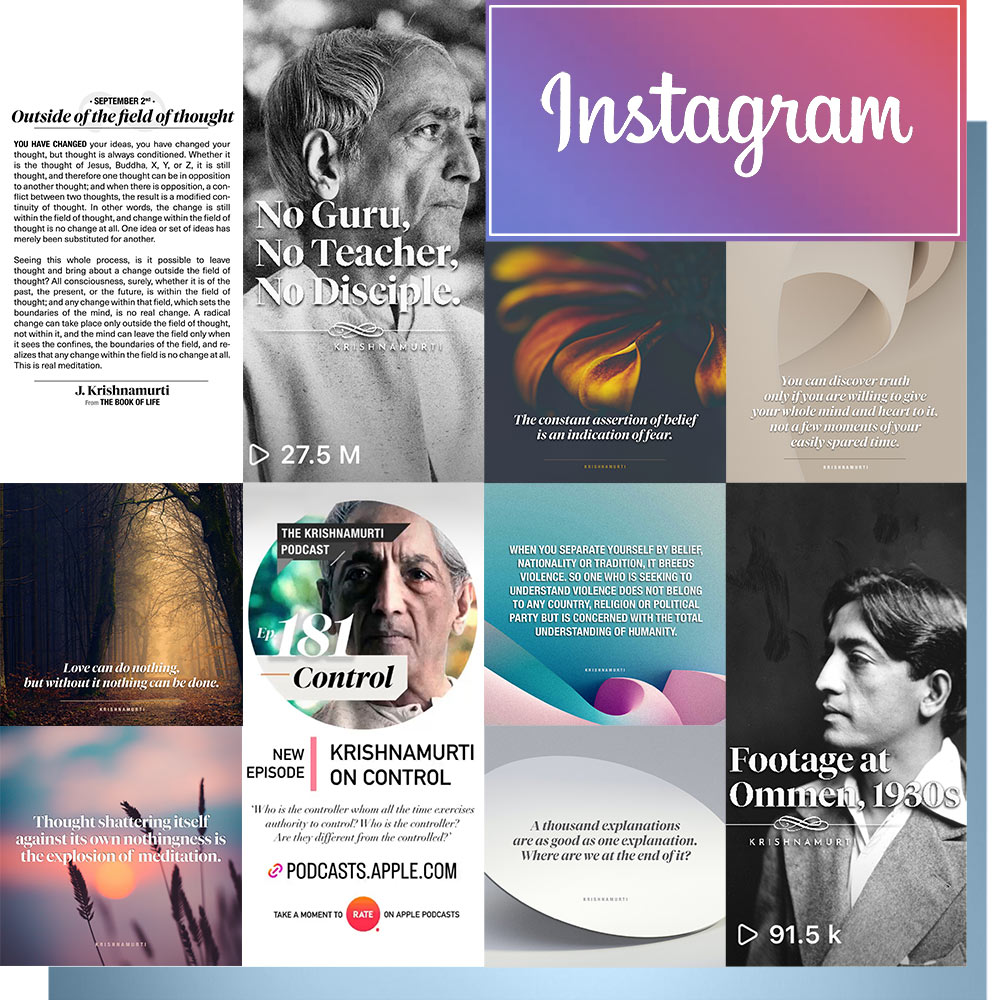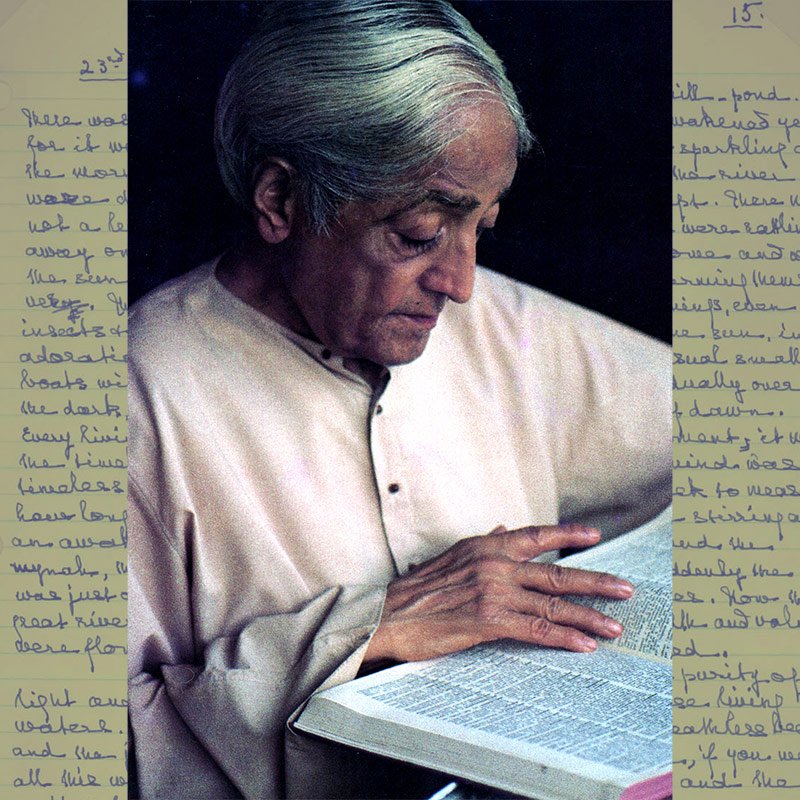
From the Archives, Vol. 5
Today, within a few clicks of a mouse or taps on a smartphone, those with an internet connection have the wealth of Krishnamurti’s teachings available to an extent never before possible. This ease and depth of access would have been impossible to imagine when Krishnamurti began his public talks in the 1920s, and even when they ended in 1986. Illustrated with photographs, this article looks back at the way Krishnamurti’s teachings were made available before the internet and outlines the evolution of dissemination over the years, from the Early Works to audiocassettes to digital media.
The first Krishnamurti release was the book At the Feet of the Master in 1910 when he was just 15 years old. Whether this was a book actually by Krishnamurti is highly questionable; he had no recollection of writing it. Later, other Early Works were published, such as The Kingdom of Happiness (1927) and Life in Freedom (1928).
Until the 1960s, Krishnamurti’s talks were made available mainly in the form of Verbatim Reports, which were based on stenographers’ notes. These reports later became The Collected Works, published in 17 volumes.
It was not until the 1950s, with Aldous Huxley’s involvement, that Krishnamurti books as we know them were published. First came Education and the Significance of Life (1953) and then Commentaries on Living (1956). To the present day, there has been a rich publishing history by major publishers, with around 100 books released of his talks and writings, translated into over 50 languages.
Complementing the books, many booklets have been published over the years. Usually self-published by the Krishnamurti Foundations, these are an accessible way into the teachings through a subject of interest. Some were published in Braille. Our most recent booklet, Nobody Can Teach About Yourself, is available to download for free here.
In addition to public talks to audiences worldwide, Krishnamurti was invited to give radio talks, where he reached the wider public for the first time. Several television broadcasts included The Real Revolution series (1966) and a primetime BBC interview by Bernard Levin in 1981. Film releases include The Challenge of Change (1984).
From the early 1960s, Krishnamurti allowed his talks to be recorded on audiotape. (One series previously, Ojai 1949, had been recorded on wire.) Audio reels of these recordings were produced for sale for the first time.
Some of the recordings were remastered as phonograph records in the late 1960s and early 70s. Produced by the Krishnamurti Foundations, these were a convenient way to listen to Krishnamurti at home (even if one did have to change sides halfway through a talk!)
Even more convenient was the advent of the compact cassette, which could be played at home, in the car and, by the early 80s, on personal stereos. These audio tapes were able to be quickly produced after a public talk and made available for sale the very next day.
VHS was replaced by DVD in the early 2000s. These discs were easily replicated at the Foundation, and various cover images were used to increase their appeal. DVD remained the dominant release format until the advent of internet video.
The growth of the internet and faster connections allowed more and more Krishnamurti material to be put online. This started as a searchable text collection (an expansion of The Krishnamurti Text Collection CD-ROM) and later included audio and video content. Please see jkrishnamurti.org.
Our Free to the World initiative in 2016 made Krishnamurti’s videos available on YouTube free of charge. This collection of talks, discussions, conversations and seminars was later supplemented by audio recordings and a wide selection of shorter extracts around a question or theme.
In the 2010s and 20s, social media grew exponentially. KFT has utilised these accessible and widely used platforms to bring Krishnamurti’s teachings to ever wider audiences, especially among younger generations. Daily posts include short and longer quotes, as well as video clips.

